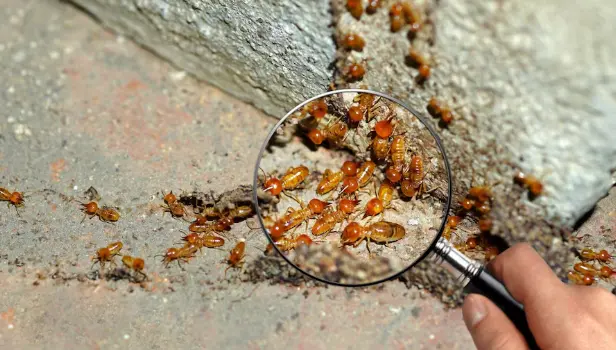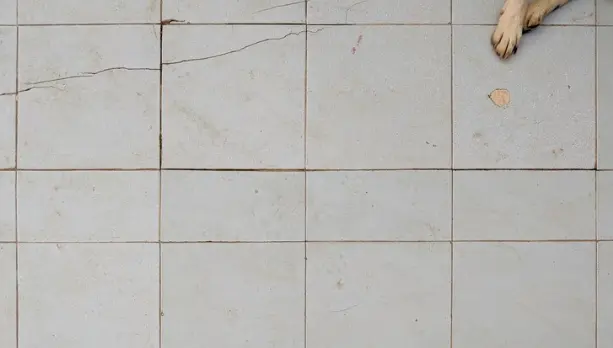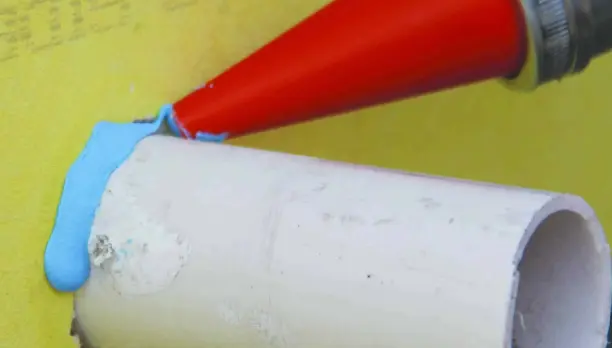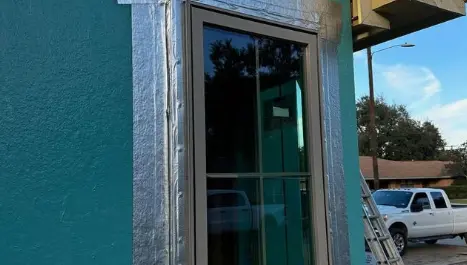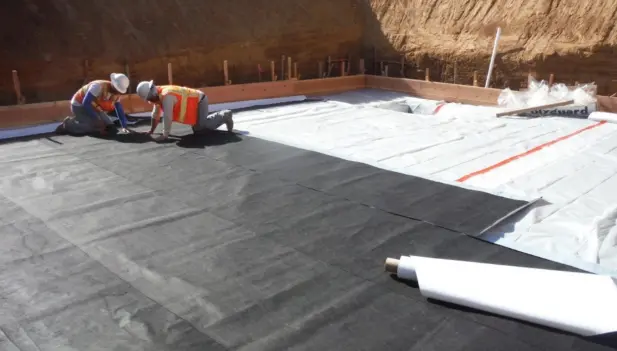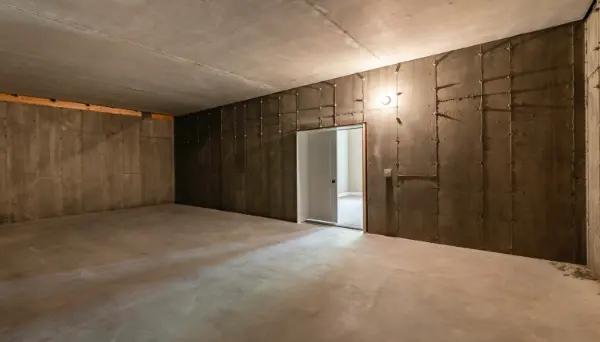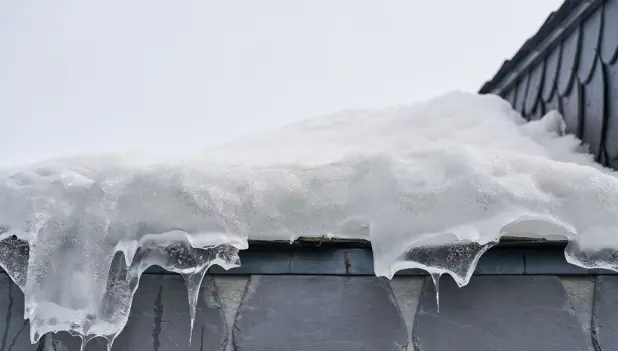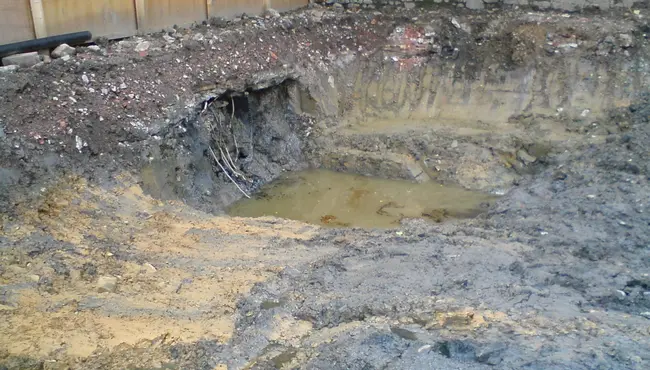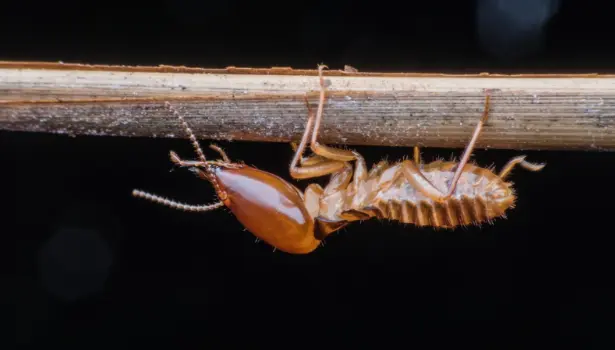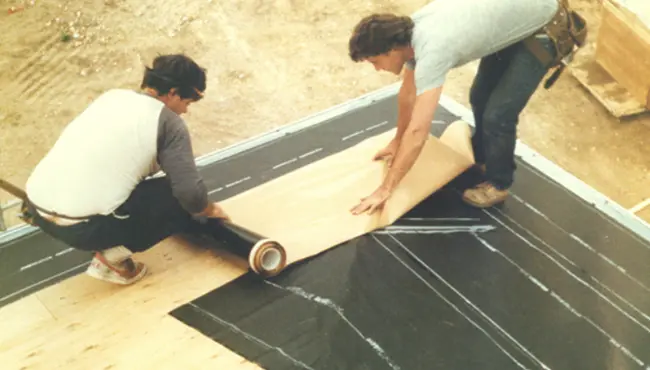Correctly installed rolled aluminum roofing vapor barriers (retarders) on low-slope roofs need to prevent water vapor from infiltrating the roof assembly through diffusion, provide damp proofing, and enhance the building's energy efficiency, comfort, and long-term integrity. They can minimize condensation within the roof that could lead to structurally damaging and unhealthy mold and threaten the insulation's effectiveness. Buildings with high interior humidity or cold climates have the greatest need for vapor barriers.

The National Roofing Contractors Association suggests using a vapor retarder, like aluminum roof flashing roll, on low-slope roof assemblies for buildings with 45 percent or more interior relative humidity during the winter or locations that experience 40 ℉ or below average temperatures during their coldest months.
Cold Building Vapor Barriers
Installing a roofing aluminum roll vapor barrier outside cold buildings that maintain temperatures of 32 ℉ and below can prevent warm exterior air from infiltrating and damaging the roof's insulation.
Peel and Seal Aluminum Roll Roofing Vapor Barriers
The straightforward application of self stick aluminum roll roofing vapor barriers makes it the preferred vapor retarder for commercial and residential roofing assemblies. In addition, the best peel and seal aluminum roll roofing vapor barrier should provide durability, quick adherence, puncture-, chemical-, and sunlight-resistance, and lack VOCs - all features of Polyguard's PEEL-N-STICK™ Aluminum Roll Roofing Barrier.

Building and Roofing Science
The second law of thermodynamics defines how moisture moves by diffusion through a roofing system (and all parts of the building envelope) - the process vapor barriers aim to prevent.
Moisture flows from an area of higher moisture concentration towards a space of lower concentration.
Moisture flows from a hotter to a colder area within a building product, like insulation.
Moisture flows from spaces of high pressure to lower pressure.
For example, in commercial buildings, oversized equipment, over-warm coils, and improper operation of HVAC equipment can release water vapor into a building's interior, which can increase the humidity (water vapor). The humidity will seek cooler spaces of lower concentration (like the ceiling components) of moisture through diffusion.
What is a Vapor Retarder?
A vapor retarder refers to barriers that provide moisture protection. The IRC describes three classes of vapor retarders according to their measure of permeability. The use and need of a vapor retarder depends on the climate and the structure.
Class I vapor retarders (barriers) (0.1 perms or less): sheet metal, glass, polyethylene sheet, and rubber membranes.
Class II vapor retarders (greater than 0.1 perms and less than or equal to 1.0 perms): extruded polystyrene or unfaced expanded, 30-pound asphalt-coated paper, plywood, and bitumen-coated kraft paper.
Class III vapor retarders (greater than 1.0 perms and less than or equal to 10 perms): concrete block, gypsum board, fiberglass insulation (unfaced), cellulose insulation, board lumber, brick, 15-pound asphalt coated paper, and house wrap.
Do You Need a Roof Vapor Barrier?
Local building codes and the climate will mandate the need and type of a vapor barrier for a building's roof - a decision best left to building experts, like the vapor barrier roofing professionals at Polyguard. We manufacture top-of-the-line waterproofing and air barrier membranes to enhance your structure's integrity, safety, and comfort. Our highly qualified experts will help you choose the best aluminum roll roofing vapor barrier for your roofing or building project.
Polyguard PEEL'N STICK Aluminum Roll Roofing Barrier
Roofing professionals can use PEEL-N-STICK™ Aluminum Roll Roofing on new low-slope roofs and for repairs. PEEL-N-STICK™ contains a rubberized asphalt waterproofing coating, laminated to two layers of high-strength polyethylene film, with an aluminum top protective layer. The coating rolls come with a simple-to-remove film release sheet for efficient application.
To ensure a successful application, apply PEEL-N-STICK™ Aluminum Roll Roofing to clean, dust-free, smooth, and dry surfaces. An asphalt-based primer will also improve adhesion.
Advantages of Waterproof PEEL'N STICK™:
Instantly adheres to most surfaces
The aluminum surface reflects heat to lessen energy costs
Its elastic properties will stretch and not tear if the building moves slightly
Easiest and most mess-free product available
Resists sunlight and most chemicals
Applying Polyguard PEEL 'N STICK™ Aluminum Roll Roofing Barrier
Builders can easily install a Polyguard PEEL 'N STICK™ Aluminum Roll roofing barrier on surfaces with a minimum slope of ½-inch per foot, to help ensure proper drainage.
Note: At 45 ℉ or below, this material will lose some adhesiveness. Using a hot air gun, or a liquid adhesive, like 650 LT, can improve adhesion at a lower temperature.
To improve adhesion, clean, smooth, and dry the surface before applying an asphalt-based primer to the surface.
Using a utility knife, cut the membrane to size.
Place the membrane where it needs to be installed and avoid walking on it.
Pull the release film back several inches from one end to expose the adhesive surface.
Place the adhesive surface on the exact installation area. It will stick instantly.
With one end in place, slowly pull the release film along the roll. As you expose more adhesive, place the membrane onto the surface.
Ensure 100 percent surface contact with all rolled-down areas once the first section is completed. Press down any small wrinkles. Cut out large wrinkles and repair them with another piece of material.
Do the following to install the next roll of membrane:
Overlap the ends by at least 6 inches.
Overlap the sides by at least 3". To ensure drainage, always make sure that the shingle side overlaps, with the higher roll overlapping the lower one.
Polyguard Offers the Best Rolled Aluminum Roofing Peel and Seal Vapor Barrier
Protecting your home or building's roof from the damaging effects of moisture infiltration involves the installation of a high-quality vapor barrier like Polyguard PEEL 'N STICK™ Aluminum Roll roofing barrier. It is an easy to apply self stick aluminum roll roofing air and vapor barrier for all your roofing and building envelope building needs.
Contact our vapor barrier experts today to learn more about selecting the best rolled aluminum roofing peel-and-stick vapor barrier.



